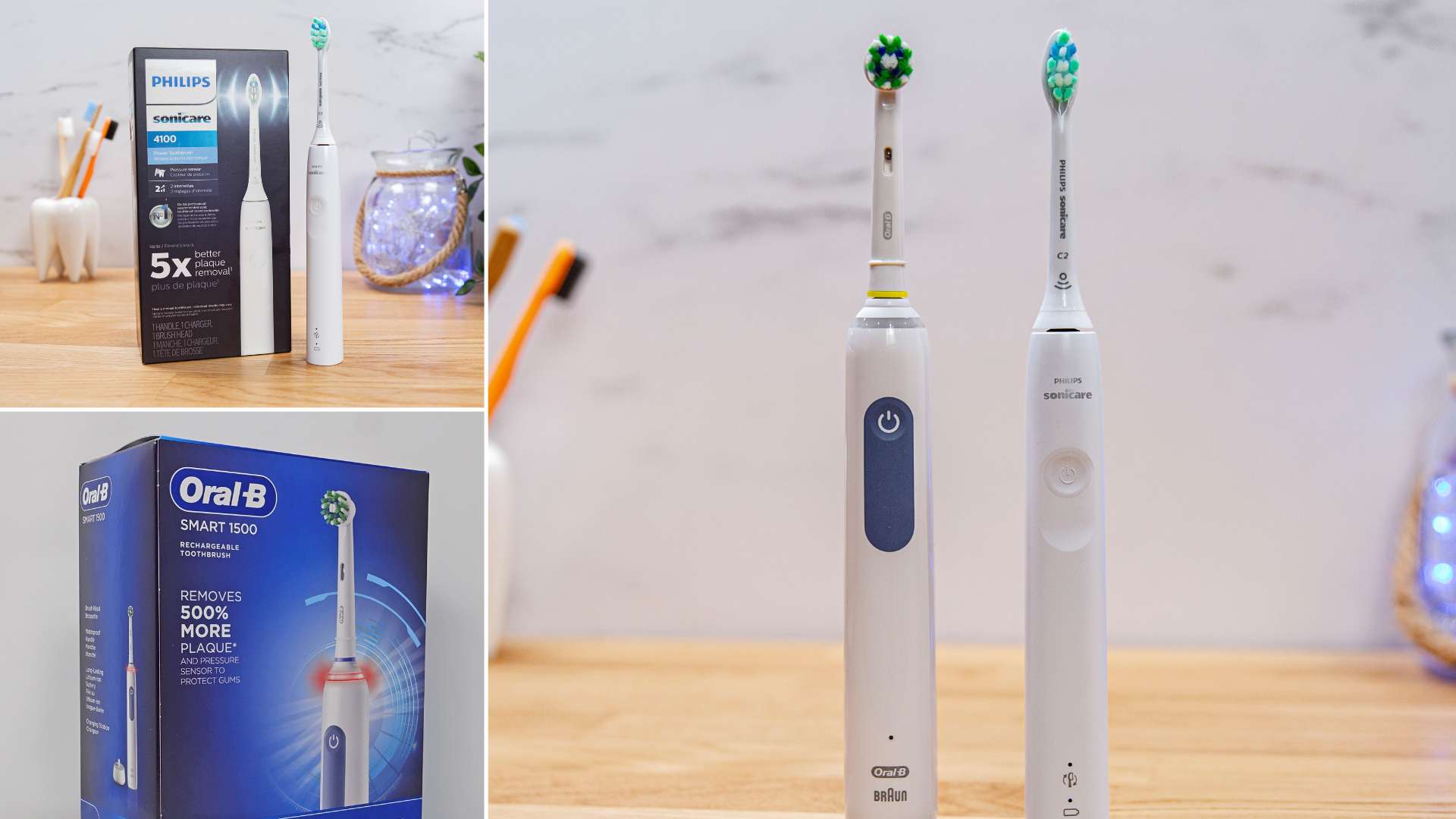
Which one would we choose?
Our choice: Oral-B Smart 1500 / Amazon, Oral B / ~$76.95
2nd choice: Philips Sonicare 4100 Series / Amazon, Philips / ~$43.79
2 excellent power toothbrushes, these are the best overall choices from their respective brands, but it is the Smart 1500 from Oral-B that is my choice.
The 1500 takes the edge because of the cleaning technology, visible pressure sensor, and long term value for money.
Key differences
| Find out more |
| Electric Teeth Rating |
| Retail price |
| Approximate 3 year cost |
| Cleaning Action |
| Number of cleaning modes |
| Brushing intensities |
| Timer |
| Pacer |
| Pressure Sensor |
| Battery life |
| Battery type |
| Number of heads included |
| Travel case included |
| Bluetooth connectivity |
| Position tracking |
| Noise |
| Warranty |
|
Our Choice

|

|
|---|---|
| Review | Review |





|





|
| $80 | $50 |
| $120 | $150 |
| Oscillating-rotating & pulsating (3D) | Sonic |
| 3 | 1 |
| - | 2 |
|
|
|
| 30 second quadpacer | 30 second quadpacer |
|
|
|
| 14+ (plus) days | 14 days |
| Rechargeable Lithium-Ion (Li-Ion) | Rechargeable Lithium-Ion (Li-Ion) |
| 1 | 1 |
| - | - |
| - | - |
| - | - |
| 73dB | 60dB |
| 2 years | 2 years |
- Cleaning/brushing action
- The Oral-B 1500 has a 3D, oscillating, rotating and pulsating cleaning action.
- The Sonicare 4100 has a sonic cleaning action.
- Handle design/colors
- Slight differences in the handle shape and design.
- The 1500 has a small rubber gripped panel around the power button which the 4100 does not have.
- The 1500 has a dimpled texture to the back of the handle compared to the smooth surface of the 4100 from Sonicare.
- The Smart 1500 is available in 4 different color options (navy, light rose, jet white & black) compared with the 6 (sugar rose, white, black, deep pink, azure blue & dark forest) of the 4100 Series.
- Cleaning modes
- The Sonicare 4000 Series has just 1 cleaning mode with 2 different brushing intensities (high and low) compared to the 3 modes of the Oral-B Smart 1500.
- Brush heads
- The brush head size and shape are different.
- The Smart 1500 comes with 1 x CrossAction brush head whereas the 4100 Series comes with 1 x C2 Optimal Plaque Control brush head.
- Pressure sensor
- The 1500 has a visible pressure sensor that the 4100 does not have.
- The 4100 vibrates the brush handle when the sensor is activated. This is something the Oral-B does not do.
- Battery
- The Smart 1500 lasts 20 days of use vs the 17 of the 4100.
- The 4100 provides more battery charge level feedback than the 1500.
- Other features & technologies
- The 4100 has a brush head replacement reminder system which is part of the Sonicare BrushSync technology.
- Accessories & box contents
- The Sonicare charging stand supports 100-240v compared to the 110-130v of the Oral-B stand.
- The 4100 has a USB connector on the charging cable vs the 2 pin adapter of the Smart 1500.
- Other
- The Sonicare 4100 is quieter than the 1500.
- The 4100 turns off automatically at the end of the cleaning cycle.
- The 4100 has an ‘EasyStart’ feature.
- Price
- The 4100 has a recommended retail price of $49.96 compared to the $79.99 of the Smart 1500.
- The Smart 1500 is the cheaper brush to own over the years.
Please note. Every effort is made to ensure the key differences listed are correct, but these differences are subject to change without notice. Products and the box contents can be changed without notice and different variants can exist.
Detailed comparison: what’s the difference between the Philips 4100 Series and Oral-B Smart 1500?
The 2 brushes being compared here are without a doubt amongst the best electric toothbrushes available today.
The Smart 1500 is my choice for the best overall Oral-B electric toothbrush whilst the 4100 Series gets the same recognition within the Philips range of brushes.
Both offer a great blend of performance and features for the price. And both offer the essential features our in-house dentists recommend.
Arguably they are like for like products. But, because they are from different brands, there are some differences.
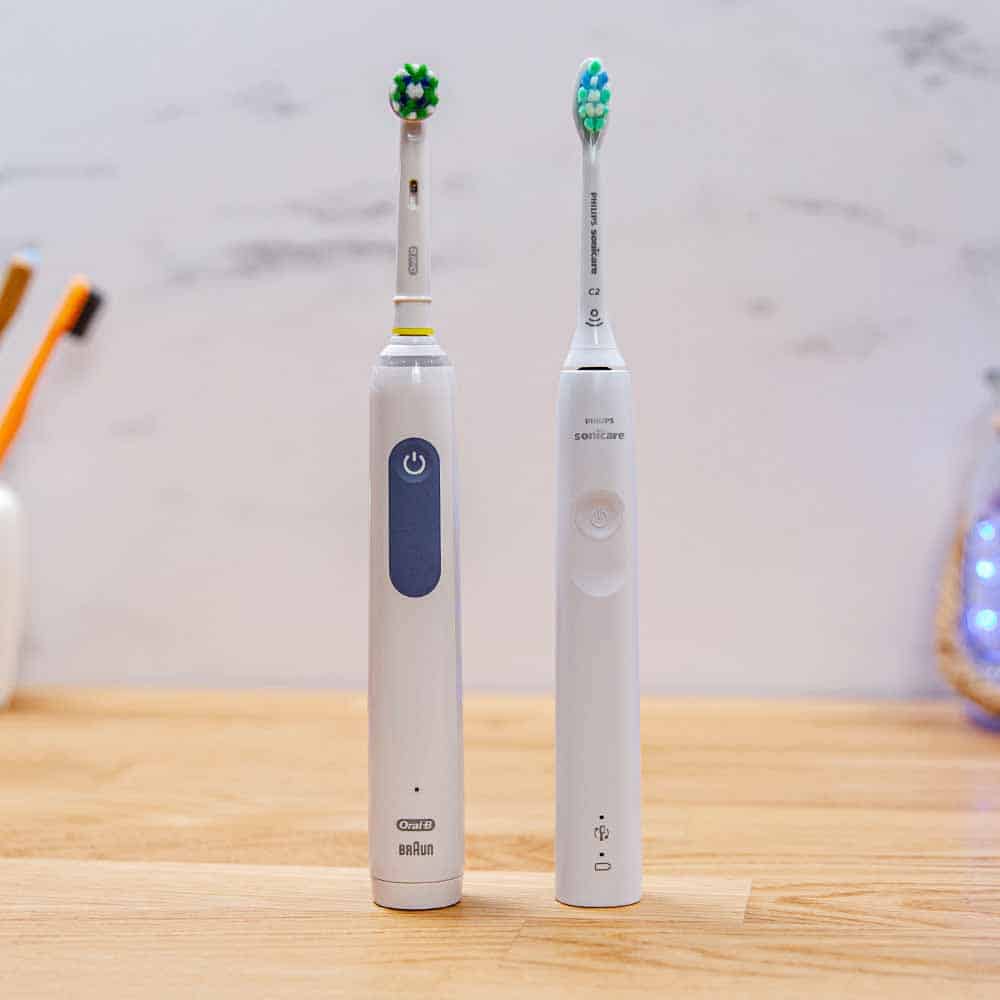
The first and perhaps one of the most significant differences between these models is the cleaning action. The way in which they clean the teeth is slightly different.
The Sonicare offers a sonic cleaning action, which means the bristles move from side to side in a sweeping motion.
Compare this to the oscillating, rotating and pulsating action of the Oral-B. It does move the bristles from side to side, but the circular shape of the brush head means the cleaning action is rounded. The pulsations are an extra dimension to the brushing process which are essentially vibrations to assist in the cleaning.
This animated gif shows how the sonic and oscillating-rotating motions differ.
Different they are, but both are proven in clinical trials to be effective and have the backing of leading dental professionals and organizations around the world.
For lack of a better analogy, it is like choosing between a General Electric or Whirlpool washing machine. Both do the same job but the way the products are implemented and deliver the results are slightly different.
That said, the data would suggest that Oral-B’s cleaning action does have a slight edge over Sonicare. But, it isn’t necessarily an open and shut case, as our Oral-B vs Sonicare article explains.leaning/brushing action
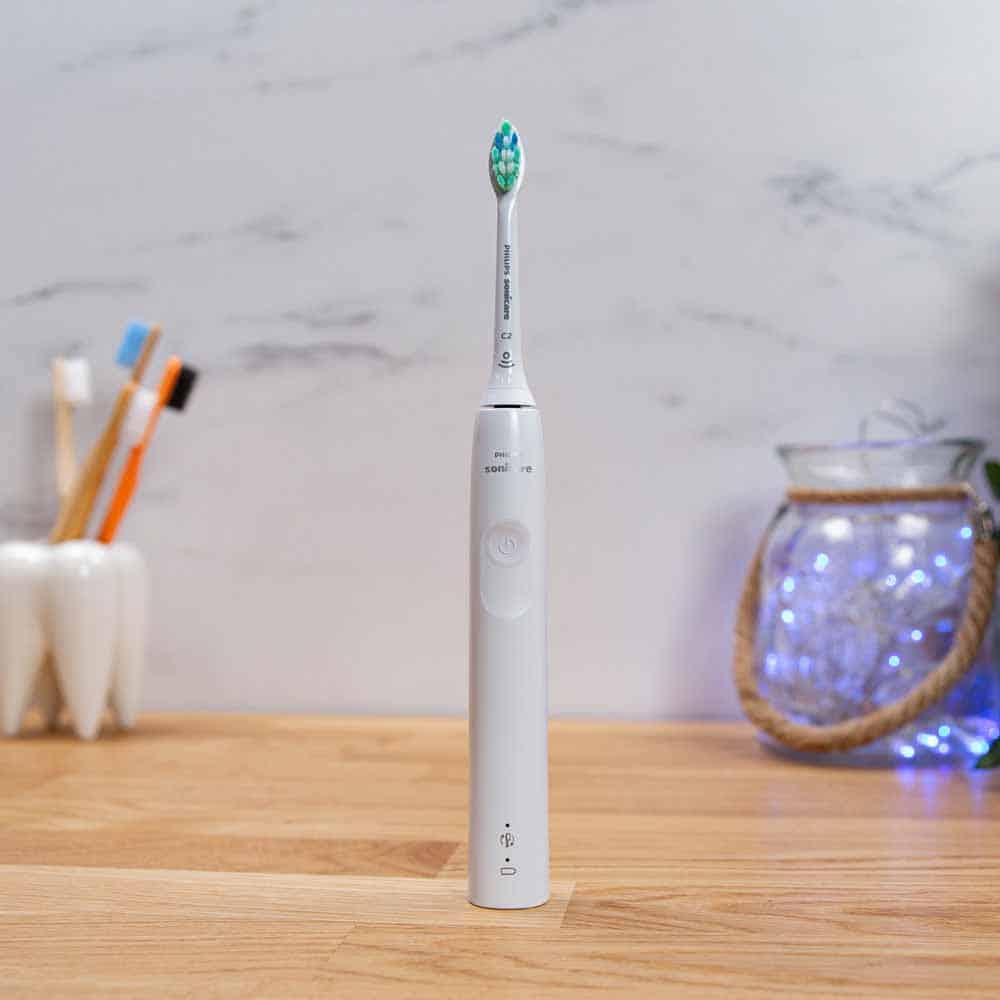
As a consequence of the different cleaning actions, the brush heads supplied with each toothbrush are slightly different too.
The Oral-B Smart 1500 has a small round brush head, whilst the Sonicare has a slightly larger oval/rounded rectangle shaped brush head.
The small round brush head is generally a little easier to position in the mouth, particularly for those who have smaller mouths with crowded teeth.
An Oral-B head tends to clean a single tooth surface at a time, whereas the larger Sonicare brush head tends to cover 2-3 teeth at the same time.
For most people, this is not a deal breaker, but may well be something to be considered.
The 4100 comes with a C2 Optimal Plaque Control brush head compared to the CrossAction brush head on the Oral-B Smart 1500. Both clean the teeth well, but clearly noticeable is the fact many of the bristles on the CrossAction brush head are angled.
This angling of the bristles is to help achieve the best clean of the teeth and gums.
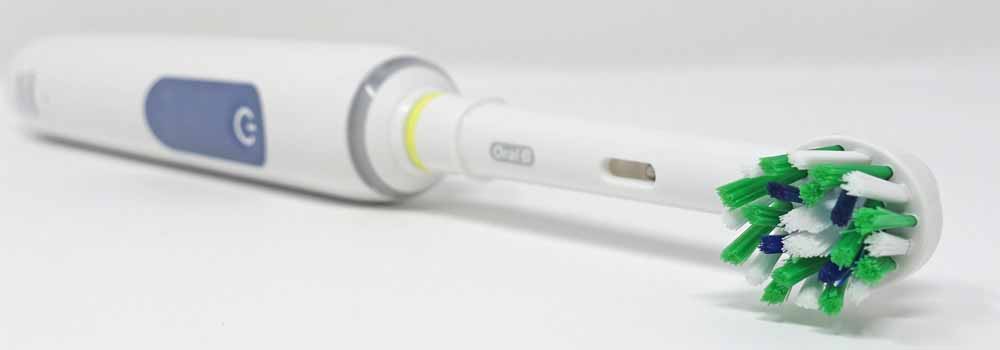
Both brands offer a range of different brush heads that have different bristle configurations and styles to achieve different cleaning results. These heads are interchangeable with the handle, so you don’t need to stick with the style of brush head that came supplied in the box.
Both the Sonicare 4100 and the Oral-B 1500 have a fairly typical electric toothbrush look to them. The handles are rounded cylinders with the brush head fitting onto a metal shaft that extends from the motor sealed inside the handle.
They are similar in physical size but the 4100 is marginally slimmer. It is too a bit lighter at 1 ounce less than the 1500.
The size and weights of the 2 brushes are as follows:
Smart 1500:
- Height (without head) – 7.68 inches/19.5cm
- Height (with head) – 9.13 inches/23.2cm
- Width – 0.98 inches/2.5cm
- Thickness – 1.14 inches/2.9cm
- Weight (without head) – 4.2oz/119g
- Weight (with head) – 4.4oz/124g
4100 Series
- Height (without head) – 6.8 inches/17.3cm
- Height (with head) – 9.2 inches/23.4cm
- Width – 0.9 inches/2.5cm
- Thickness –1 inches/2.7cm
- Weight (without head) – 3.2oz/92g
- Weight (with head) – 3.4oz/97g
Both have a single power button on the front of the handle. But, the 1500 has a silicone/rubber panel around it that provides the main color accent to the handle.
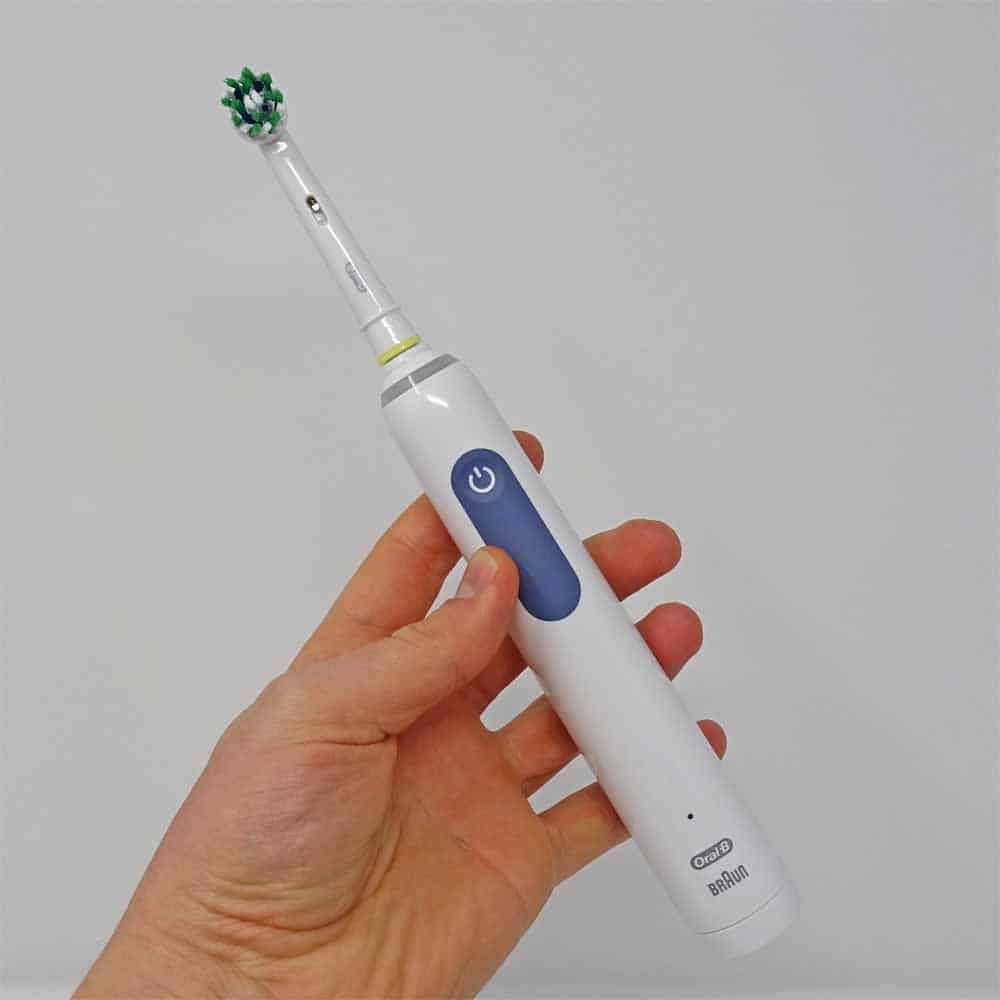
This ovalish shaped panel is available in navy, light rose, jet white and black color.
It contrasts with the gloss white plastic body of the 1500. Although the black variant does have a gloss black plastic rather than white.
Because the 1500 is more glossy it stands out a little more compared to the matt color finish on the 4100 Series.
The 4100 is available in 6 different color options, sugar rose, white, black, deep pink, azure blue and dark forest.
Unlike the 1500, where the color accent is the grip around the power button, the whole handle is the aforementioned color.
I think the 4100 Series is a bit more appealing for this reason. The brush looks like it has a bit more personality.
Another small touch linked to the color is that with the black and dark forest 4100 models, you get a black charging stand, rather than white like you do with all the others.
The 1500 is the slightly more grippy handle in hand. This is thanks to the larger rubber/silicone panel on the front but also the dimpled texture that runs the length of the back of the brush handle. It is not the most grippy, but more so than the smooth touch plastic of the 4100.
All things considered both are functional and look good, but the Sonicare strikes the more premium option.
Around the neck of the Smart 1500’s brush handle is a clear panel. It runs a full 360 degrees around the handle.
This is a 360 degree visible pressure sensor.
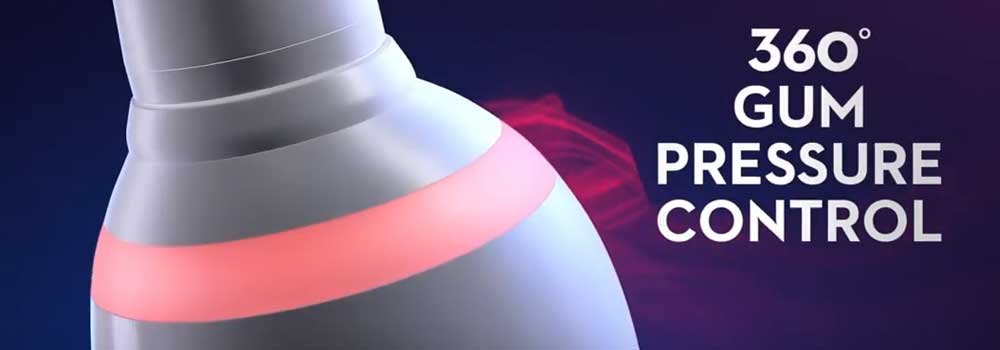
Whilst the 4100 has a pressure sensor, it is not visible like the 1500’s.
Well in truth, the brush head replacement light on the handle does flash when the sensor is activated, but it isn’t exactly comparable.
The 360 degree light ring on the Oral-B Smart will be lit red when the sensor is activated. It is a bold visual warning that you are brushing too hard.
Both do still slow the brush head movements when activated. You will likely notice the change in sound and brushing sensation.
A feature which the 4100 has, that the 1500 does not, is that the handle is vibrated differently when the sensor is activated. This is a nice touch and the pattern of vibration is different from the standard vibration, so you do notice it.
For some this might actually be considered a better implementation than the visible sensor.
The pressure sensor works on all cleaning modes on both handles.
The 4100 Series has 1 cleaning mode, but it does have 2 brushing intensities.
The high and low settings use different amounts of power from the brush motor and give a different brushing experience when in use.
Therefore the 4100 can be said to offer 2 brushing modes.
The Smart 1500 does offer 3 different modes in total.
These are daily clean, sensitive and whitening.
The high intensity on the 4100 is akin to the daily clean mode, whilst the low mode is akin to the sensitive mode.
Most of us don’t need the extra cleaning modes, but they can potentially be useful in particular circumstances. The sensitive mode on the 1500 and the low intensity on the 4100 will provide a slightly more gentle brushing experience, which some may prefer.
Whilst the extra modes may potentially help achieve different cleaning results, they don’t significantly alter how clean your teeth are after use.
The power of the clean from electric toothbrushes can be off putting for new users, particularly if they are used to a manual brush.
This is where the EasyStart feature of the 4100 Series really stands out.
Over the first 14 brushing sessions, the power of the brush is increased. It starts off by offering a slightly more gentle experience before gradually increasing the power to the maximum available.
In use the Sonicare is the much quieter brush to use. It provides a more audible hum whereas the Oral-B makes a much more mechanical sounding noise. The 4100 produces 60dB compared to the 75dB of the 1500.
At the end of a cleaning mode, the Sonicare does too turn itself off automatically, whereas the 1500 continues to operate until you turn it off.
You may prefer one over the other, but I think some of these subtle differences actually make the 4100 a more attractive option for everyday use. It feels ever so slightly more refined. Such slight differences only really show their value in repeated daily use.
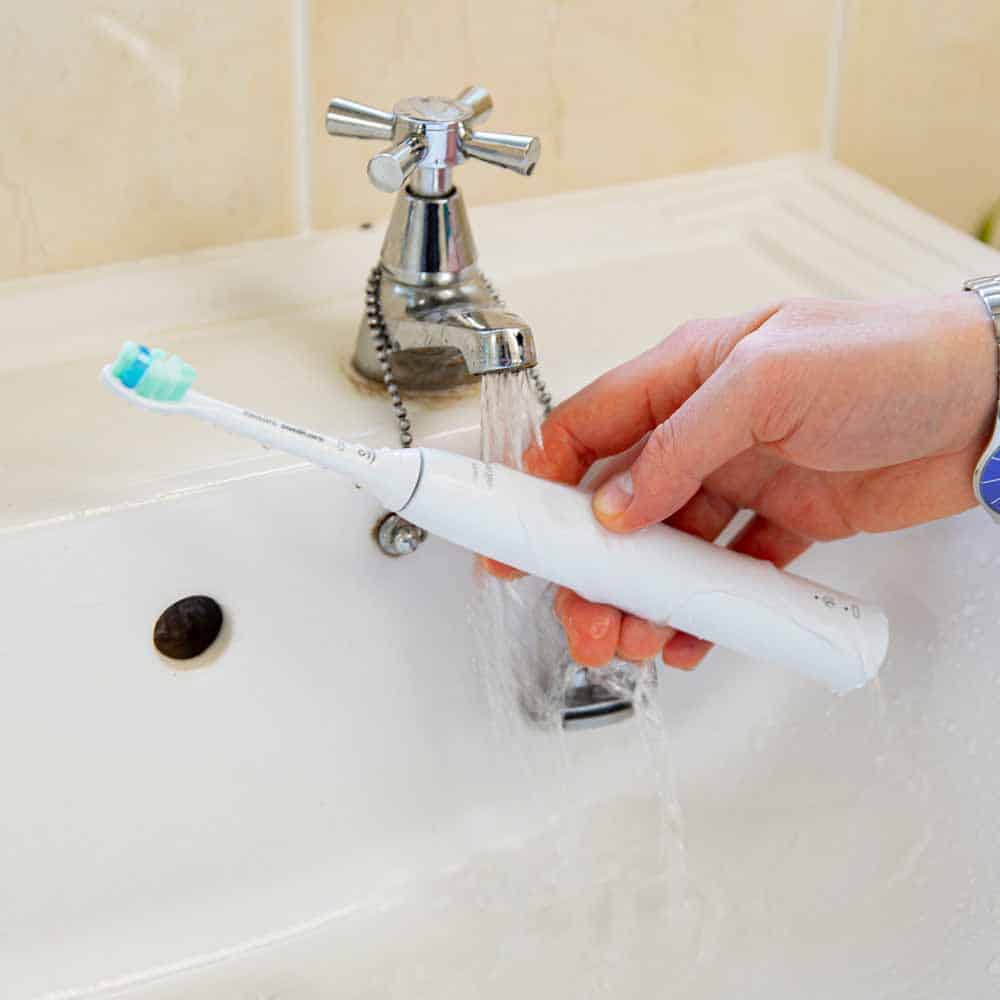
Another way in which this is demonstrated is via the BrushSync technology that is built into the 4100.
The handle tracks each individual head attached to the handle (via an RFID chip in the brush head) and alerts you via an LED on the brush handle when it is time to change the head.
Both Oral-B and Sonicare heads have bristles that fade in color and act as reminders to replace the head, but the Sonicare goes one stage further to really make it clear to you that it is time to change.
Whilst the general rule is to replace the head every 3 months, statistics tell us that 42% of people don’t replace their brush head this often. The 4100’s brush head reminder system gives you the prompt to change just when you need it by tracking the number of brushing sessions, brushing time and pressure applied.
Essentially, if you brush more frequently than most, and do so for longer, it will alert you to replace the head sooner than it might for most because your usage pattern is different.
Check out our article on BrushSync technology for a detailed explanation of how it works, but it is all centered around an RFID chip that is built into the toothbrush head.
Coming to the last of the differences now.
Both toothbrushes have rechargeable batteries inside the handle. Both use Lithium-Ion batteries and both have a claimed life of 2 weeks on a single charge.
The 1500 achieves around 20 days, but the 4100 achieved only 17 days.
Typically, Sonicare brushes outperform Oral-B, but in this case when set to the high intensity, the 4100 falls short.
If you use the low intensity setting, the 4100 lasts over 5 weeks, which is much more impressive, but most will want to use the full power of the brush.
Both achieve a satisfactory level of performance from the battery though.
Where the 4100 perhaps takes the edge again is with the feedback you get from the handle about the remaining charge.

Although both have an LED to offer feedback, the 4100 is more comprehensive. The 1500 shows either green, or red when the power is low. The LED on the 4100 on the other hand is lit green, yellow or orange subject to the charge status. The handle will vibrate too when the power is really low as another form of notification.
Both brushes come with a charging stand included, but the one supplied with the 4100 supports 100-240v, compared to the 110-130v of the Oral-B stand. It is a small difference, but if you travel frequently it can have an impact.
Also affecting things is the power cable for the stand itself. Both have a power cable hardwired into the stand, but the Sonicare charger has a USB male type A connector compared to the 2 pin US power adapter on the Oral-B charger.
The USB works well for charging from various power sources and can still be powered from a normal outlet, you just need to source or supply your own adapter, you don’t get one in the box.
Does one clean better than the other?
Yes, the clinical evidence would suggest so. Oral-B is generally considered to offer the best cleaning of the teeth and gums.
However, in truth, the difference is very slight.
For most users, it is better to worry about perfecting your brushing routine than it is worrying about which brush you pick.
If you focus more on ensuring you are brushing with the correct technique twice a day for 2 minutes each time, you will likely gain the biggest benefit to your oral health than simply selecting between these 2 toothbrushes.
If you asked the respective brands directly, they would each suggest their model does.
Studies have shown that the rotating-oscillating technology, as used by Oral-B generally speaking, has the edge here.
This is because the smaller brush head size and the motion it has resulted in greater improvements of users oral health than a Sonicare model.
This is however under clinical study conditions and in real-world use, both offer an excellent clean.
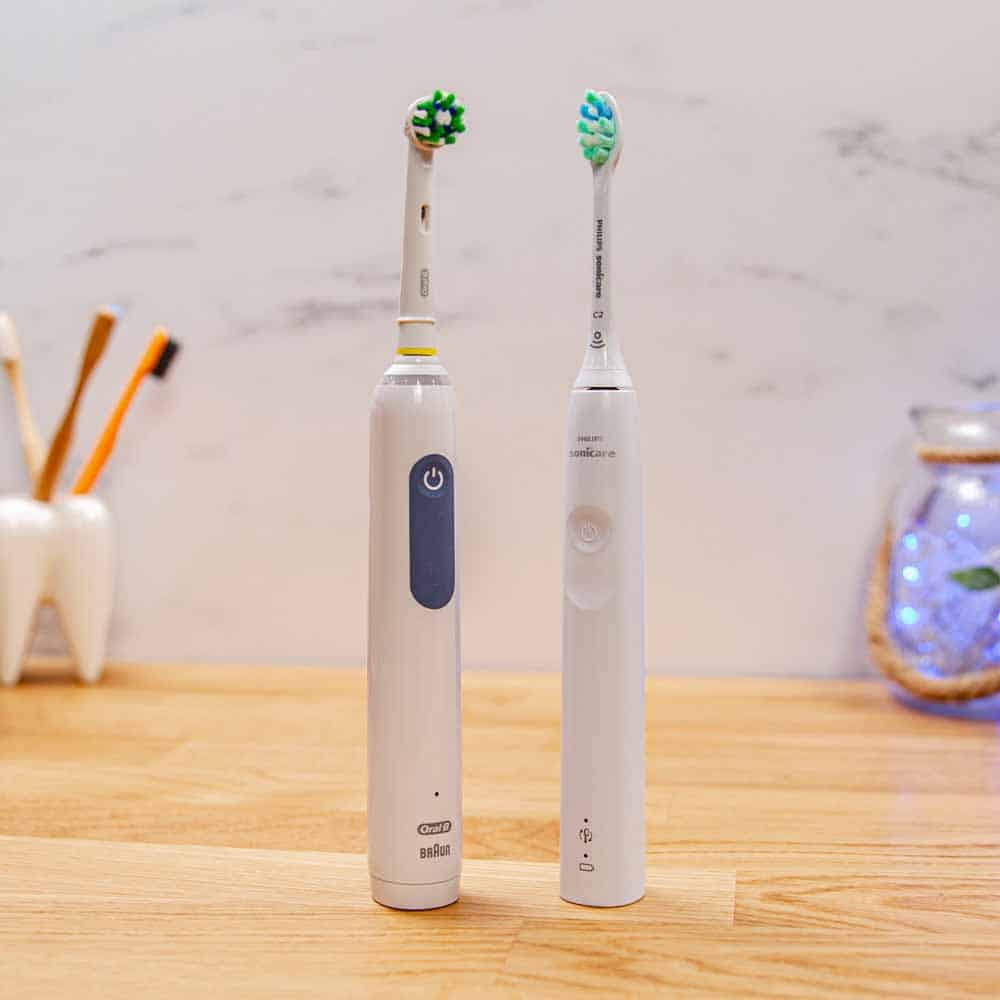
I personally prefer the Oral-B cleaning action, but do happily use Sonicare toothbrushes too.
Why I feel this way is because I tend to come away with my teeth feeling cleaner after use. This is likely more a psychological (mental) feeling than reality.
The cleaning action or Oral-B is a bit more of an aggressive clean or so it feels, but the Sonicare is by no means bad. In fact, one of the appeals of Sonicare is how gentle it is. It feels softer on the teeth and gums, but it is still clinically proven as being effective.
Let me be clear, that in daily use the real difference in the cleaning performance is going to be negligible. If one of these is to be your first electric toothbrush, either will offer significant benefits compared to a manual brush.
Is one better priced than the other?
Yes.
The 4100 Series from Philips has the lowest retail price at $49.96 compared to the $79.99 of the Smart 1500.
In reality, both models are often discounted, with around 20 percent to be saved.
You should be able to purchase the 1500 for around $65 and the 4100 for about $40.
Although the Sonicare is quite a bit cheaper, it actually works out more expensive over the several years you own the brush.
This is because of the cost of replacement brush heads.
A single Oral-B head costs approximately $5 compared to $10 for Sonicare.
Part of the reason the 4100’s head are more expensive is as a result of the RFID chip that gets built into the head.
Therefore the Oral-B Smart 1500 is the more cost effective model.
Based on 1 user over a 3 year period, the Smart 1500 works out at $120 compared to the $150 of the Sonicare.
Admittedly it is not a huge difference in price, but if you extend this calculation by another 2 years, you will spend $40 extra on replacement heads than you would with Oral-B.
You need to pick the brush that is right for you, but if money is a key consideration, the Oral-B is the more affordable option.
Please note that all prices quoted are approximates and will vary based on location, supplier and time of purchase. These figures were correct at the time of writing and should not be relied upon as hard fact, but used as a guide during your decision process.
Conclusion
I can happily recommend either of these brushes and would use either myself.
Both do a great job of cleaning the teeth and offer the essential features of an electric toothbrush.
Neither are terribly overpriced and bogged down with unnecessary extras.
But, when deciding between them, it is the Smart 1500 that takes the edge for me, just.
The reason is the cleaning action, visible pressure sensor and long term value for money.


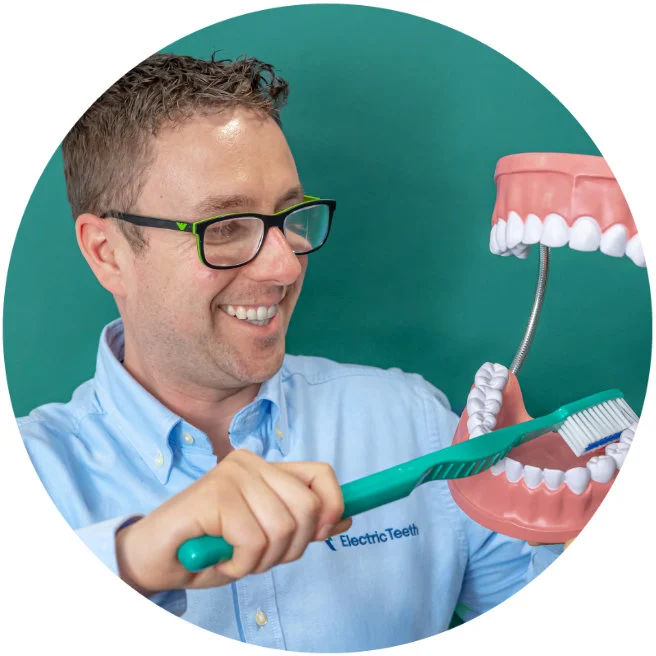
Good review. I invested in 1500 . We also travel to India a lot , I found it annoying to use manual brush . After years of ORAL B I no longer want to brush manually. So I bought sonicare 4100 so I could take it while traveling outside the country! .